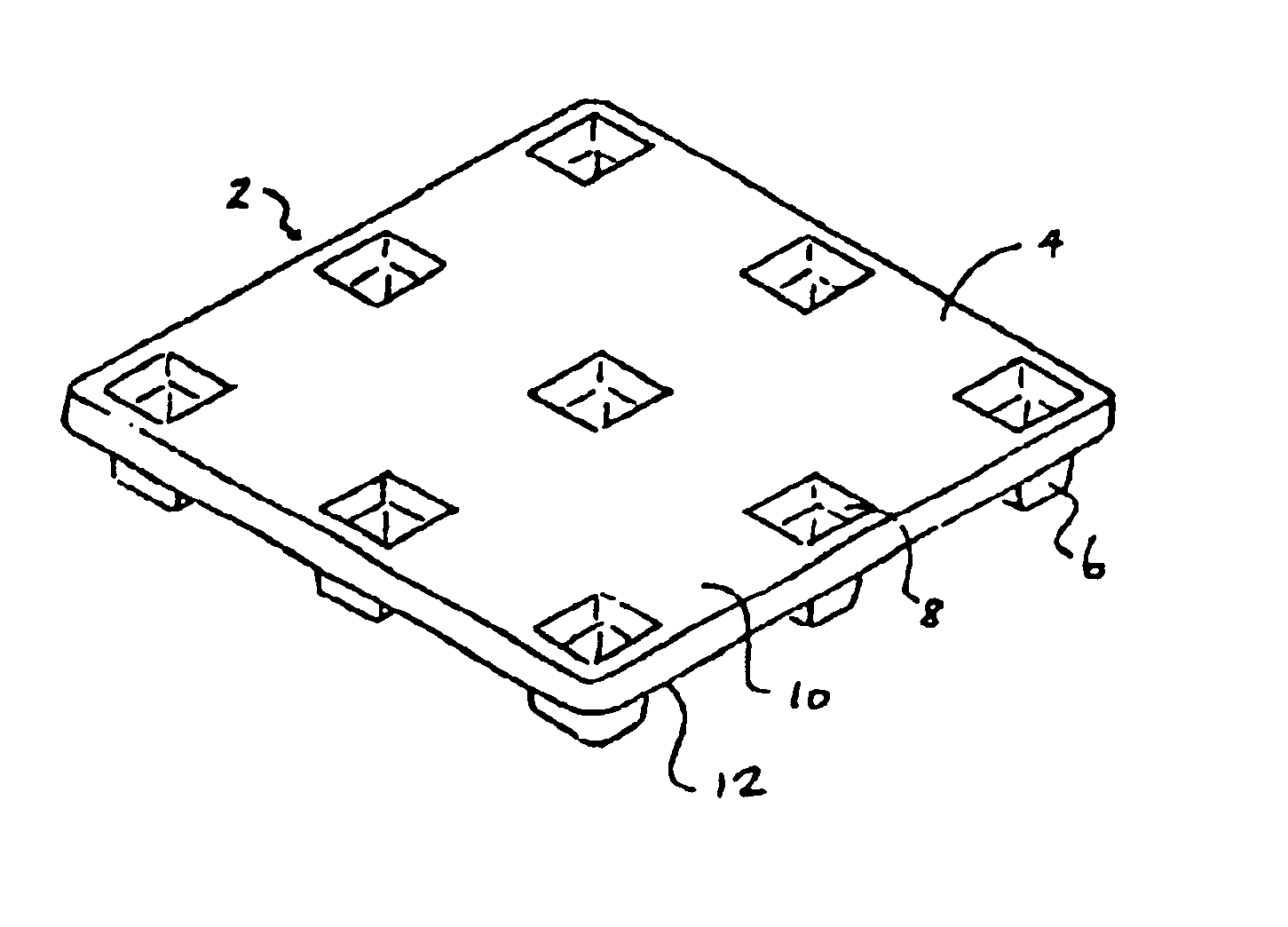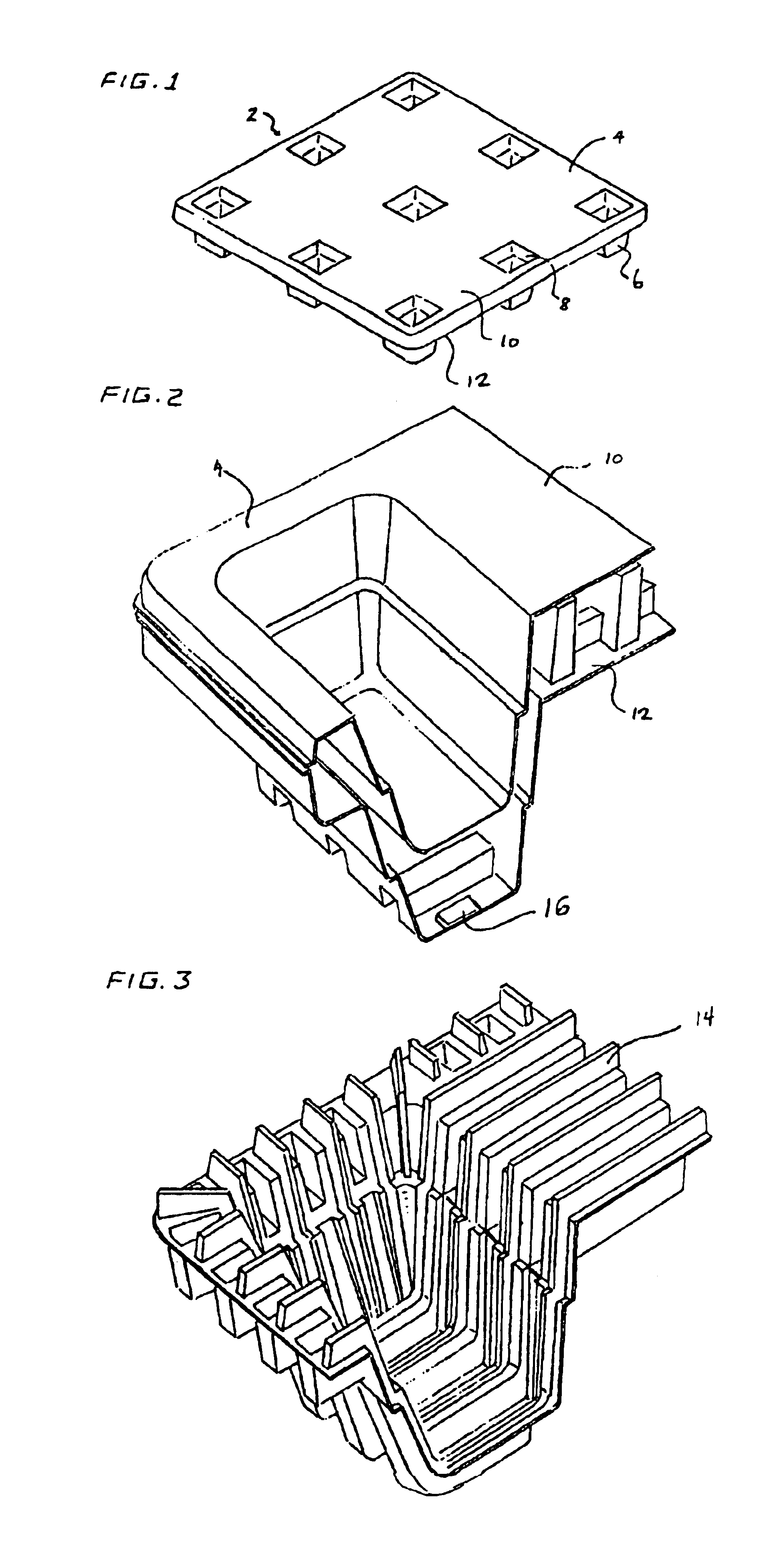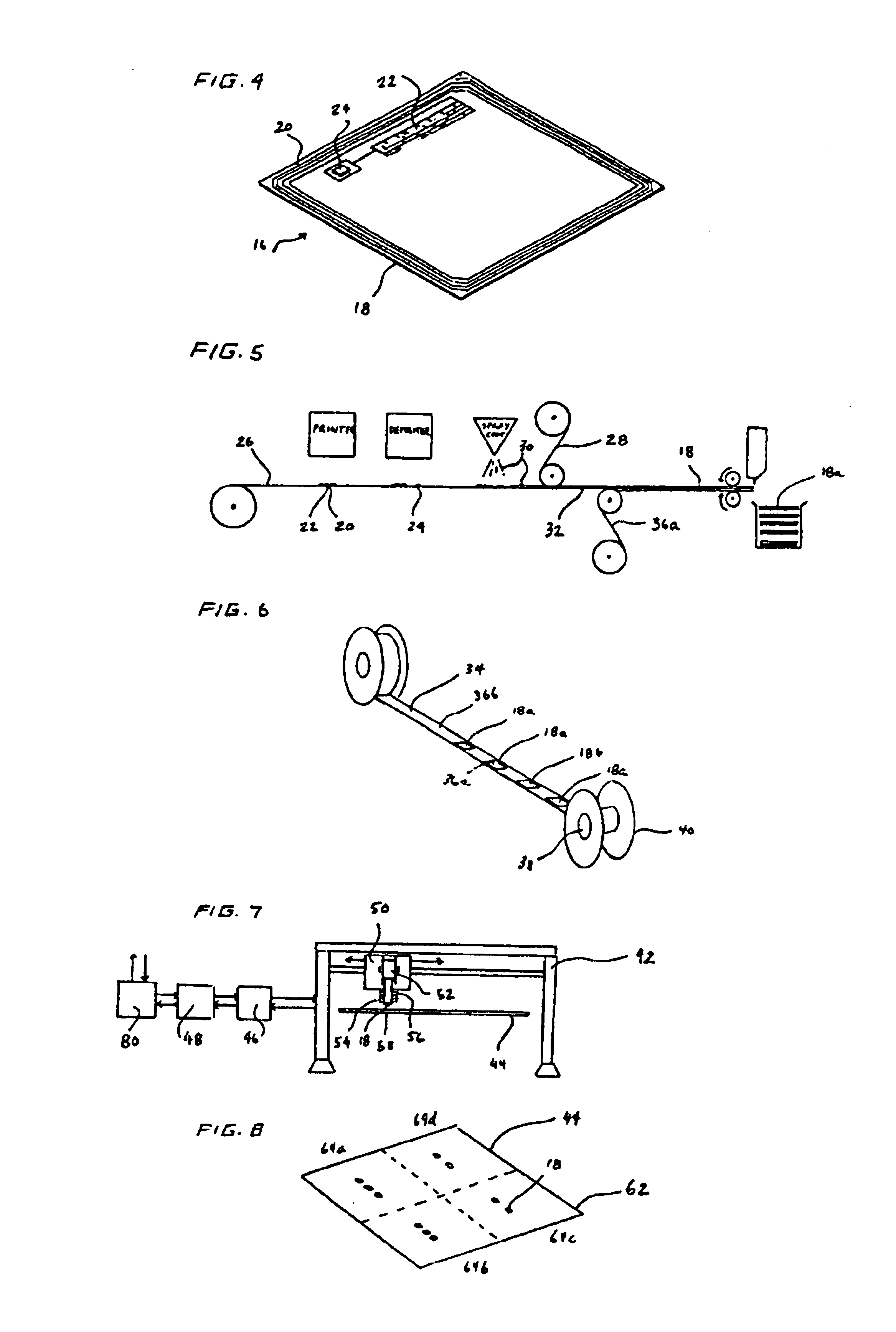Thermoformed apparatus having a communications device
a communication device and thermoformed technology, applied in the field of thermoformed apparatuses, can solve the problems of limited residual value of conventional wooden pallets at the end of their useful life cycle, inability to optimize semi trailer loading or per-unit transportation costs, and significant workers compensation claims, so as to increase the durability and reliability of the identification system, increase the ability to track and identify, and enhance the protection of the communication device
- Summary
- Abstract
- Description
- Claims
- Application Information
AI Technical Summary
Benefits of technology
Problems solved by technology
Method used
Image
Examples
Embodiment Construction
[0036]Referring to FIGS. 1-3, the preferred embodiments of a pallet apparatus 2 of the present invention employs a nesting pallet 4 and a communications device, such as a radio frequency identification device 16. Nesting pallet 4 has downwardly extending pallet legs 6 which are receivable in pallet pockets 8 of an adjacent pallet to provide a nesting configuration for consolidated storage and transportation. Pallet 4 is made of a plurality of polymeric plastic sheets thermoformed into a single article. Pallet 4 includes a top plastic sheet 10 and a bottom plastic sheet 12. This arrangement is referred to as a twin sheet construction. In one preferred embodiment, plastic sheet 14, shown in FIG. 3, is sandwiched between sheets 10 and 12, in what is referred to as a triple sheet construction. One advantage of a triple sheet construction is that the same load bearing strength of a twin sheet construction can be provided with a much lower measure of relatively expensive plastic in a trip...
PUM
| Property | Measurement | Unit |
|---|---|---|
| weight | aaaaa | aaaaa |
| weight | aaaaa | aaaaa |
| weight | aaaaa | aaaaa |
Abstract
Description
Claims
Application Information
 Login to View More
Login to View More - R&D
- Intellectual Property
- Life Sciences
- Materials
- Tech Scout
- Unparalleled Data Quality
- Higher Quality Content
- 60% Fewer Hallucinations
Browse by: Latest US Patents, China's latest patents, Technical Efficacy Thesaurus, Application Domain, Technology Topic, Popular Technical Reports.
© 2025 PatSnap. All rights reserved.Legal|Privacy policy|Modern Slavery Act Transparency Statement|Sitemap|About US| Contact US: help@patsnap.com



